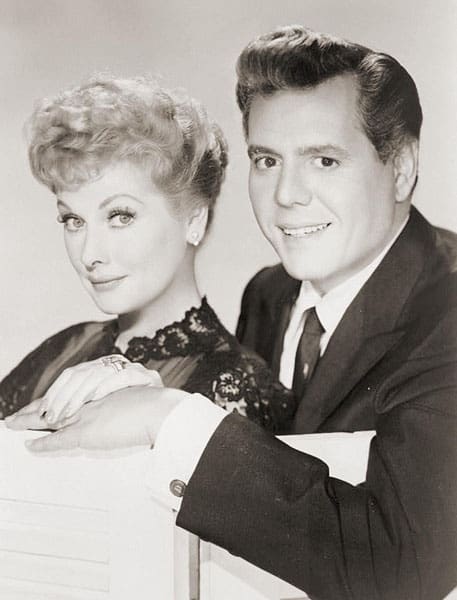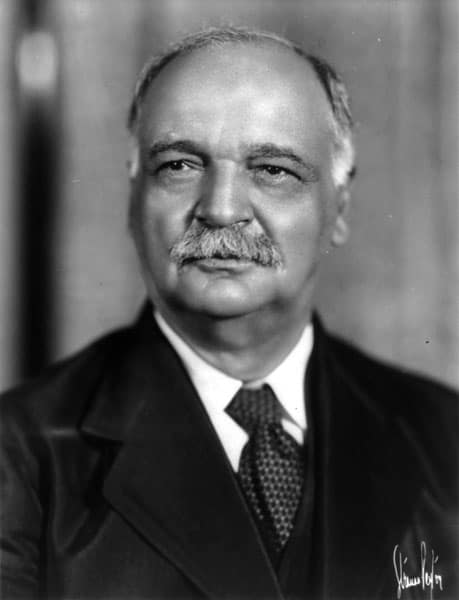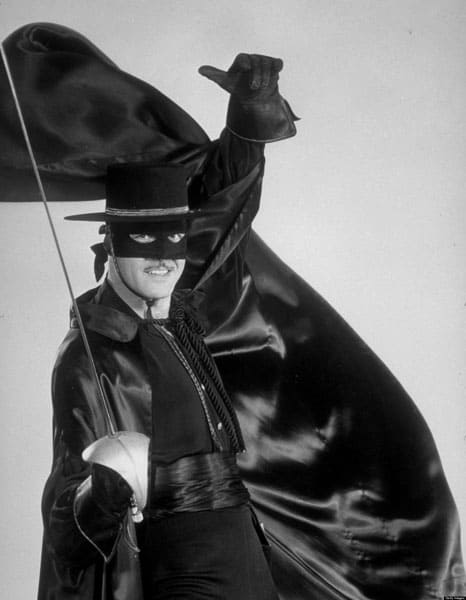Why Affirmative Action for Hispanics and American Indians?
Steven Farron, American Renaissance, December 2, 2016
Historians (e.g., Syme 1958: 168, 419, 435) [1], have pointed out that the most serious distorting factor in historical thinking is the powerful tendency of the human mind to ignore the role of chance and irrationality and to assume that what happened was a logical development. [2]
In this essay I will discuss an important example of this tendency: the inclusion of Hispanics and American Indians as beneficiaries of affirmative-action preferences–and how, in order to justify their inclusion, a social virtue was invented that had never existed before: diversity.
Hispanics
As Hugh Davis Graham (2002) has pointed out:
Virtually all parties to the congressional debates over civil rights and immigration policy studiously avoid the topic of affirmative action for immigrants. . . . Yet civil rights enforcement officials, when asked whether wealthy immigrants [and their descendants] from Hong Kong or Argentina [nearly all of whom are white] were eligible for American affirmative action programs, acknowledged that all persons of Asian or Hispanic national origin are eligible. (Page 130)
[I]n immigration policy, the reforms of 1965 . . . produced a flood of new arrivals . . . [T]he ancestry of most immigrants . . . entitled them to . . . priority over . . . native-born Americans under affirmative action regulations. Congress in the 1960s never intended to create such a system. (Page 8).
The 2016 Democratic platform pledged that “the federal government will push more colleges and universities to take quantifiable, affirmative steps in increasing the percentages of racial and ethnic minority students . . . they enroll and graduate [emphasis added].”
Universities are only the most visible arena in which federal, state, and municipal governments have enforced affirmative action for “racial and ethnic minorit[ies].” Since the beginning of the 1960s, “minority” preferences have pervaded hiring and promotion by governments, businesses, and government contractors. Here is an example.
The Fanjul brothers (Alfonso, José, Alexander, and Andres) were immigrants from Cuba. They were descendants of a five-generation sugar dynasty, which was started with slave labor (Cuba did not end slavery until 1886). In the 1990s, their business assets were worth $500 million. One of their most profitable businesses was underwriting hundreds of millions of dollars of federal- and Florida-government bonds (Graham 2002: 154-5).
Underwriting government bonds is a nearly risk-free way to make money. The Fanjuls won these federal and state underwriting rights because they were open only to “minorities,” and the Fanjuls were Hispanic. A Greek immigrant who built an underwriting business from nothing could not even bid on them, although he might have saved the taxpayers money by charging a lower fee. The Fanjuls’ children, grandchildren, nieces, and nephews receive preferences in admission to colleges and professional schools over the children of, for example, non-English-speaking Bulgarian immigrants.
The same is true of the descendants of the many Hispanic TV and movie stars of the early and middle 20th century: Desi Arnaz, Cesar Julio Romero, Fernando Lamas, José Ferrer, etc. and the descendants of their wives: Lucille Ball and Edith Mack Hirsch (Desi Arnaz’s wives), Rosemary Clooney and Stella Magee (José Ferrer’s wives), and Arlene Dahl and Esther Williams (Fernando Lamas’ wives). José Ferrer was born in Puerto Rico, educated at a Swiss boarding school, and then was a member of an elite club at Princeton in the 1930s, when Princeton had an explicit policy of not admitting Jews.
Preferences for such people are entirely legal. The federal government’s definition of “Hispanic” for both the census and affirmative action guidelines is, “a person of Mexican, Puerto Rican, Cuban, Central or South American, or other Spanish culture or origin, regardless of race.”

Famous Hispanic, Desi Arnaz with Lucille Ball.
Since preferences apply “regardless of race,” a person qualifies for affirmative action even if every one of his Latin American ancestors was a white slave owner. And slavery was much more brutal in Latin America than in British North America. Allan Nevins, the dean of Civil War historians, observed (1947: 63-4) that “bad as slavery was in parts of the lower South, it was paradise compared with Cuban slavery.” The difference in the standard of living between North American and Latin American slaves is illustrated by the fact that in 1825, a quarter of all blacks in the Americas were in the United States, even though only 6 percent of the slaves imported into the Americas went to British North America. This was because of high black mortality rates in Latin America.
How did the Fanjuls and the descendants of Desi Arnaz, Cesar Romero, Fernando Lamas, and José Ferrer become affirmative-action minorities?
In the first two decades of affirmative action (the 1960s and 1970s) its rationale was to redress the effects of slavery and post-slavery anti-black discrimination. During this period, “black” and “minority” were used interchangeably, and arguments about affirmative action were about whether past anti-black discrimination justified present discrimination preferences (Farron 2010: 1-6, 9-14, 125-6).
However, government agencies have a powerful tendency to increase their range of activity and thereby their importance. From the early 1960s, the federal agencies that enforced affirmative action kept adding groups to the “minority” category. Neither the public nor Congress discussed or even noticed these extensions (Farron 2010: 264-6). The two largest beneficiaries–Hispanics and American Indians–constituted only 3 percent and 0.02 percent, respectively, of the American population in 1960. Moreover, older Americans grew up at a time when the Hispanic population of the United States was much less than 3 percent (1.5 percent in 1940, 2 percent in 1950), and did not even think about Hispanics.
In 1900, the number of Hispanics in the United States was 500,000 (0.65 percent of the total population). The 1924 immigration law exempted Latin Americans from immigration quotas, so Latin Americans were actually admitted to the United States preferentially over Europeans. In 1962, federal agencies and private businesses seeking government contracts had to demonstrate non-discrimination by reporting the number of Hispanics and American Indians as well as blacks they employed, and selective universities were actively recruiting Hispanics (Graham 1990: 62; Graham 2002: 136-7; Oren 2000: 225). With the passage of the Immigration Act of 1965, Latin American immigration skyrocketed, and the Hispanic population of the United States is now 57 million (18 percent of the US population).
This means that the large majority of Hispanics are descendants of people who were beneficiaries of affirmative action from the time they arrived. Nearly all the rest are descended from ancestors who entered the USA preferentially over Europeans.
Diversity
By the late 1970s, the Hispanic proportion of the American population had more than doubled, to 6.4 percent. The proportion of the other non-blacks whom unelected government bureaucrats had surreptitiously added to the minority-affirmative-action category had also grown rapidly. The presence of non-blacks could no longer be ignored. But the entire “minority” category now accounted for more than a fifth of the American population, and it would obviously keep rising. The process could no longer be reversed without severe political and social consequences. So a new justification for racial discrimination had to be found.
“Diversity” is the most insidious and pernicious of all defenses of discrimination. The other justifications assume that discrimination is a necessary evil–a temporary expedient that is needed to create a society in which race and ethnicity are irrelevant. Diversity assumes that discrimination is an unqualified good and that it should be perpetual.
Diversity as social virtue was invented by Justice Lewis Powell in 1978 in the Supreme Court decision in Regents of the University of California v. Bakke, which weighed the constitutionality of the medical school of the University of California at Davis reserving 16 percent of its annual openings for blacks, Asians, Mexican-Americans, and Native Americans. [3] Four justices ruled that racial discrimination violated the Constitution. Four others ruled that it was necessary to redress the effects of past discrimination. As defenders of affirmative action had always done, they used “black” and “minority” interchangeably (Bakke #370-72). Justice Powell pointed out (#295-7) that this equation was blatantly wrong. However, he also ruled that the University of California could continue to practice racial preferences, but for only one reason (#311-12): “the attainment of a diverse student body,” which creates an “atmosphere of speculation, experiment and creation–so essential to the quality of higher education.”
Thus, by a five-to-four decision the Supreme Court upheld the constitutionality of racial discrimination. Justice Powell mentioned diversity in only one paragraph, without any empirical evidence; none on the other justices mentioned it at all. [4] Nevertheless, Powell had invented a social virtue of wonderful usefulness: racial discrimination could now be justified as having no victims; everyone benefited.
At first, advocates of racial discrimination did not realize what a godsend Powell had invented (Wood 2003: 113-14, 212-14). When they did, they made diversity into the ultimate social virtue. No empirical evidence has ever been offered to show that diversity has the benefits for a student body that Powell claimed, but theoretically it might. However, diversity was applied to all occupations; although for most–accountants, anesthesiologists, carpenters, welders, fire-fighters–no possible benefit could exist. In fact, for the very case on which Powell ruled, a medical school, diverse student opinions could not possibly have any benefits. [5]
How did the diversity that the Fanjul brothers added to the bond underwriting business benefit anyone, except the Fanjul brothers? What type of diversity will their children, grandchildren, nieces and nephews bring to the universities to which they are admitted, along with the Hispanic descendants of Lucille Ball and Rosemary Clooney? Yet they receive preference in admission over the children of non-Hispanic white single mothers who work as waitresses.
Lucille Ball’s and Rosemary Clooney’s descendants are Hispanic because a person needs only one remote ancestor for inclusion in an affirmative-action-minority category (Farron 2010: 63-4). So an American needs only one ancestor who was a Puerto Rican slave-owner to qualify as a minority.
American Indians
Many Americans have never had qualms marrying American Indians. American Indians are somewhat similar in appearance to whites, so most people who have three white grandparents and one American Indian grandparent look white. There are of plenty blue-eyed, blonde American Indians, and they all qualify for affirmative action (Sowell 1993: 159). A business owner in California qualified for a government contract that was open only to minority business owners because he had one great-great-grandparent who was a Cherokee Indian (Zelnick 1996: 301).
It could be argued that that should have disqualified him. In 1860, as high a proportion of Cherokees as white Southerners owned black slaves. The Cherokees, Choctaws, Creeks, Seminoles, and other American Indians who owned black slaves fought for the Confederacy during the Civil War.
The number of Americans who classify themselves as American Indians increased from 509,000 in the 1960 census, to 1.96 million in the 1990 census, to 5.2 million in the 2010 census — obviously without any immigration of American Indians. During the 1990 census, 70 percent of the people who classified themselves as Native American appeared white to the census interviewer (Wright 1994: 53). The proportion is undoubtedly higher now.
So, there are now officially ten times more “American Indians” than in 1960. Consequently, in order to avoid a presumptive accusation of anti-Native-American discrimination, universities are obliged to admit and graduate ten times more “American Indians” than they did in 1960; businesses and government agencies must employ and promote ten times more “American Indians,” and banks must lend ten times as much money to “American Indians.”
For American Indians and Hispanics it is meaningless to talk of discrimination. Most of the ancestors of “American Indians” are white; the large majority of Hispanics arrived in the United States after pro-Hispanic discrimination began, and the ancestors of nearly all the rest entered the United States preferentially over Europeans.
There is an important misconception about American Indians. No one can deny that before the 20th century, white Americans often treated Native American tribes horribly. However, it is not well known that American Indians were welcomed if they decided to leave their tribes and assimilate into American society. I will provide five examples.
First, as late as 1958, 94 percent of white Americans told Gallup pollsters that they disapproved of marriages between whites and blacks. On the other hand, one of the most popular novels in American history, James Fenimore Cooper’s The Last of the Mohicans (1826), centered on the love between the Mohican Uncas and the white daughter of Colonel Munro. Four movies of The Last of the Mohicans were made before 1937, the first in 1912.
Second, it was only in 1948 that blacks could serve with whites in the American armed forces, but two American Indians were generals in the Civil War: Ely Parker in the Union army and Stand Watie in the Confederate army.
Third, the first Miss America contest was in 1921. The first black entrant was in 1971. But the winner in 1926, Norma Smallwood, combined a distinctively American Indian last name with the reddish-brown skin and the facial features of her Cherokee ancestors.
Fourth, the movie 42, about Jackie Robinson, begins with the statement that in 1946 every Major League player was white. In fact, since 1942, Allie Reynolds, a member of the Creek tribe, was among the most highly regarded big-league pitchers. Eighteen Native-Americans big leaguers began their careers before 1920. Some were called “Chief,” in honor of their ancestry. (Reynolds was called “Superchief.”)
Fifth, although Barack Obama was the first non-white president, the first non-white vice president was Charles Curtis (1929-33). Curtis lived nearly his entire childhood, until high school, with his maternal grandparents on the Kaw Indian reservation in Kansas. The people of Topeka, Kansas, repeatedly elected Curtis, a lifelong Republican, to the House of Representatives from 1892 (when he was 32) to 1907, when he became one of Kansas’ senators. He was the majority leader of the Senate from 1925 to 1929. In 1928, when the Republicans nominated Herbert Hoover for president, Curtis was the obvious choice for running mate.

Vice President Charles Curtis
The Hoover-Curtis ticket won 444 of the 531 electoral votes. Even Oklahoma, Virginia, North Carolina, and Texas voted for Hoover and Curtis. It was only the second time that Oklahoma ever voted for a Republican president; and, with one exception (Tennessee in 1920), the first time since the end of Reconstruction in 1876 that any state of the old Confederacy voted Republican. The reason was that the Democratic candidate, Al Smith, was the first Catholic presidential candidate, and that was intolerable to Protestants. No one seemed to have been bothered by the prospect that the American Indian Curtis (a Methodist) could have been the next Republican presidential nominee and therefore the next president.
To put Curtis’ career into perspective, the first year that Gallup asked Americans whether they would vote for a Jew or Catholic was 1937. Fifty-six percent told pollsters they would not vote for a Jew; half of non-Catholics told pollsters they would not vote for a Catholic. [6] Of course, Gallup did not ask whether they would vote for a black, since black candidates were such a rarity in the country.
Hispanics
Immigrants from Spanish-speaking Latin America are labelled Hispanics. Except for the Caribbean, nearly the entire population of Spanish-speaking Latin America is racially white, Amerindian, or mixed. Non-Caribbean Hispanics certainly have not suffered worse discrimination than American Indians; most experienced none. An excellent illustration is the landmark 1948 case Perez v. Sharp, in which the California Supreme Court ruled that the state’s anti-miscegenation law violated the Constitution. The case was brought by Sylvester Davis and Andrea Perez. They wanted to marry but could not, because Davis was black and Perez, who was Mexican-American, was considered white under California law. [7]
Many whites had a romantic view of Mexican-Americans because of associations with the Old West. Beginning in the early 20th century, many popular movies and television shows were about the exploits of Mexican-American heroes such as the Cisco Kid and Zorro. There has never been a series of movies or television shows about a distinctively Irish-American, Polish-American, Italian-American, or Jewish-American hero.

Zorro: an Hispanic hero.
What about Caribbean Hispanics? Piri Thomas was a black Puerto Rican who was born and raised in New York. In the 1940s, he traveled through the South, and in Galveston, Texas, he met a Mexican-American. He told the Mexican he wanted to break the ultimate racial taboo by going to a white brothel, even though “my hair ain’t good [i.e., it was kinky] and my nose is too flat and my skin is too dark.” The Mexican told him, “If you do not speak a word of English, you may pass for Puerto Rican.”
When they entered the brothel, the manager welcomed the Mexican, but he assumed that Thomas was an American black. However, when Thomas pretended that he did not understand English, the manager had no objections to him. The manager told the Mexican, “[W]e got all kinds of people coming in, all kinds of foreigners . . . from Columbia and Peru and Cuba, and that’s all right, but we got to keep these damn niggers down” (Thomas 1967/1997: 185-9). Even in a white brothel in Texas in the 1940s, being Hispanic made someone who was racially black socially white.
In the middle of the 20th century, many Hispanics looked different from non-Hispanic whites. Hispanics were also, on average, considerably poorer and less educated than whites, largely because most were recent immigrants from poor countries. This led to one of the most absurd developments in American social history .
At the beginning of the 1960s, when white Americans tried to come to terms with the legacy of slavery, unelected government bureaucrats included Hispanics in the same “minority” category as blacks. Neither the public nor Congress discussed or even noticed this bizarre categorization because Hispanics were then such a small percentage of the population. Minority status, in turn, resulted in relabeling Hispanics as deserving non-whites and generating a myth that Hispanics had suffered the same type of discrimination as blacks. [8]
Bibliography
Eltis David 2001: “The Volume and Structure of the Transatlantic Slave Trade: A Reassessment.” William and Mary Quarterly, 3rd series, 68,1: 17-46
Farron, Steven 2010; The Affirmative Action Hoax, second edition
Fogel Robert 1989: Without Consent or Contract: The Rise and Fall of American Slavery.
Graham, Hugh Davis 1990: The Civil Rights Era: Origins and Development of National Policy 1960-1972.
Graham, Hugh Davis 2002: Collision Course: The Strange Convergence of Affirmative Action and Immigration Policy in America.
Nevins, Allan 1947: A House Divided, 1852-1867.
Oren, Dan A. 2000: Joining the Club: A History of Jews and Yale. Second edition.
Sowell, Thomas 1993: Inside American Education: The Decline, the Deception, the Dogmas.
Sowell, Thomas 1994: Race and Culture.
Syme, Ronald 1958: Tacitus. Volume 1.
Thomas, Piri 1967/1997: Down These Mean Streets. New York: Random House.
Wood, Peter 2003: Diversity: The Invention of a Concept.
Wright, Lawrence 1994: “One Drop of Blood.” New Yorker (July 24): 46-55.
Zelnick, Robert 1996: Backfire: A Reporter’s Look at Affirmative Action.
Footnotes
[1] In this essay, I cite sources by the author’s last name, date, and page numbers. Full information is in the Bibliography.
[2] An illustration of this are the constant explanations on CNBC and Blumberg of why the stock market rose or fell.
[3] Allan Bakke, a non-Hispanic white, applied in 1973 and 1974 and was rejected in both years. His undergraduate grade-point-average (GPA) in science courses was 3.44 (on a scale of 0 to 4); his scores on the four sections of the Medical College Admission Test (MCAT) were in the 96th, 94th, 97th, and 72nd percentiles. The specially admitted students who entered Davis Medical School in 1974 had an average GPA in their undergraduate science courses of 2.42 and averages of 34th, 30th, 37th, and 18th percentile on the four sections of the MCAT (Bakke #277). In that year, 32 whites who had higher GPAs and MCAT scores than Bakke’s were also rejected.
[4] See Farron 2010: chapter 2, for a detailed discussion of Bakke, subsequent Supreme Court decisions that upheld Powell’s decision, the horrific discrimination it justified, and the fraudulence of its implementation.
[5] Team sports are one of the few activities in which a theoretical argument could be made that an organization might benefit enough from diversity to justify hiring less qualified members of underrepresented racial and ethnic groups. However, in my extensive reading on affirmative action, I have not seen a single proposal to increase racial diversity in college and professional football and basketball.
[6] Forty percent of respondents said they would not vote for a Catholic. Twenty percent were Catholic. Presumably, no Catholic said he would not vote for a Catholic.
[7] California law prohibited “Negroes, mulattoes, Mongolians [i.e., Chinese and Japanese] and Malays” from marrying “Whites.” Whites included American Indians (and a fortiori Mexicans). As the popularity of The Last of the Mohicans attests, that has been the view of many Americans for centuries.
[8] Documentaries and movies then reinforced this myth. For example, I recently saw a documentary about Jackie Robinson. The narrator stated that when Robinson was a child in Pasadena, California, the public swimming pool was open to only whites from Wednesdays to Mondays. Then narrator stated, “Therefore, blacks and Mexicans could use it only on Tuesday.” At that time, Mexicans were considered white in California.
Western movies have often exaggerrated the level of prejudice against American Indians. They have created an antithesis between bad-guys, who are bigoted against Indians, and good-guys, who are racially tolerant.

















